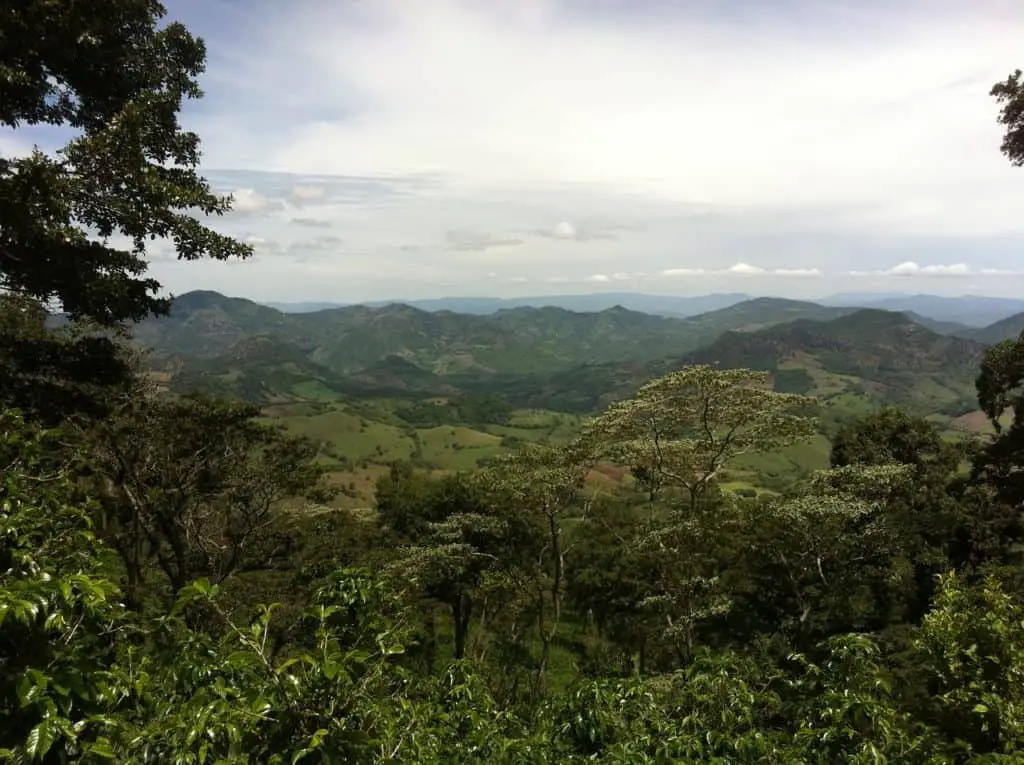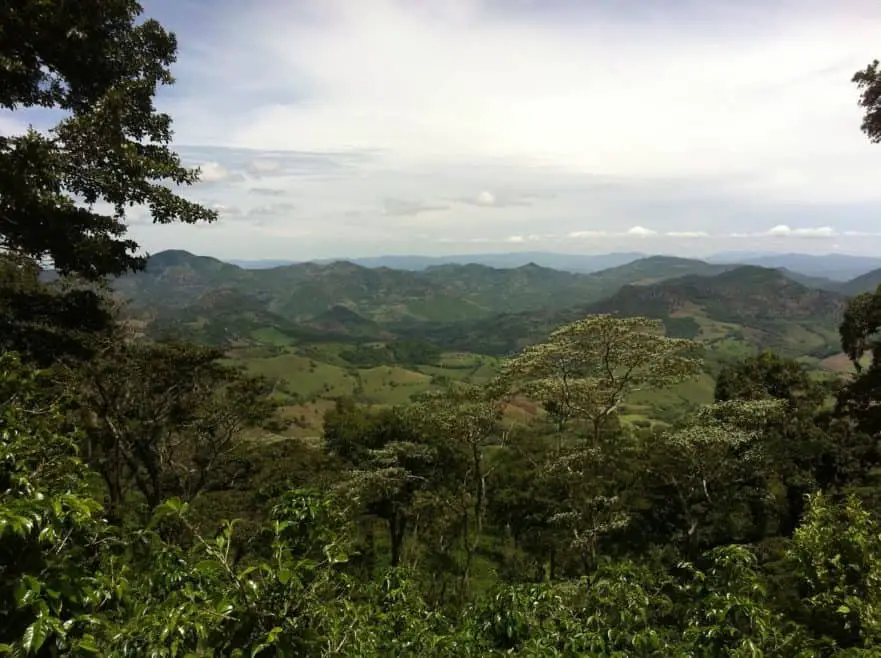
Savor the rich heritage and distinct flavors of Nicaraguan coffee, grown in the mountainous regions at altitudes perfect for coffee cultivation. Known for its smooth, balanced taste and medium body, Nicaraguan coffee offers delightful notes of chocolate, nuts, and fruit, grown traditionally with a focus on sustainability.
This blog post takes you through the intricate journey of Nicaraguan coffee, from its historical roots in the 19th century to the variety of flavors shaped by diverse growing regions like Matagalpa, Jinotega, and Nueva Segovia.
Learn about the unique characteristics of different coffee processing methods and the famed Maragogype ‘elephant beans’, all contributing to the exquisite profile of Nicaraguan coffee. Whether you are a seasoned coffee aficionado or a casual drinker, understanding the nuances of Nicaraguan coffee will enhance your appreciation for this remarkable brew.
What is the history of Coffee in Nicaragua
Coffee has a long and rich history in Nicaragua, dating back to the 19th century. The first coffee plants were introduced to Nicaragua in the 1830s by an Englishman named John Walker, who established a coffee plantation on the slopes of the volcano Mombacho. In the following decades, coffee production in Nicaragua grew rapidly, and the country became a major exporter of coffee to Europe and the United States.
In the 20th century, coffee became a key contributor to Nicaragua’s economy, and the country was one of the top producers of coffee in the world. However, in the 1980s and 1990s, Nicaragua’s coffee industry was negatively impacted by political instability and civil war, leading to a decline in production. In recent years, the industry has made a recovery, and Nicaragua is once again a major player in the global coffee market.
What does coffee from Nicaragua taste like?
Nicaraguan coffee is known for its smooth, sweet taste with notes of chocolate and nuts. It is also known for its low acidity and full body. The specific flavor characteristics of Nicaraguan coffee can vary depending on the specific region it is grown in and the specific type of coffee plant used.
For example, coffee grown in the northern region of Nicaragua may have a different flavor profile than coffee grown in the south. Additionally, the flavor of coffee can be affected by the roasting process, with darker roasts having a stronger, more robust flavor and lighter roasts having a more subtle, nuanced flavor.
Where does coffee grow in Nicaragua?
Coffee is grown in several regions of Nicaragua, including Matagalpa, Jinotega, and Nueva Segovia. The coffee growing region of Matagalpa is known for its high quality Arabica coffee, while Jinotega is known for its Robusta coffee. The majority of coffee grown in Nicaragua is Arabica, although some Robusta is also produced. Lets go into a little more detail on each region:
Jinotega
The region has a favorable climate for growing coffee, with high altitudes, abundant rainfall, and well-draining soils. The coffee grown in Jinotega is primarily Robusta, which is known for its strong, bold flavor and high caffeine content.
Matagalpa
The coffee grown in Matagalpa, Nicaragua is known for its high quality and flavor. The region has a favorable climate for growing coffee, with high altitudes, abundant rainfall, and well-draining soils. Most of the coffee grown in Matagalpa is Arabica, which is known for its sweet, smooth flavor and lower caffeine content.
Nueva Segovia
Coffee from Nueva Segovia, Nicaragua is known for its high quality and unique flavor profile. The coffee produced here is known for its smooth, sweet taste with notes of chocolate and nuts. Nueva Segovia coffee is also known for its low acidity and full body.
Estelí
Esteli’s is known for its sweet, chocolatey taste with notes of nuts and fruit. Estelí coffee is also known for its low acidity and full body. The coffee industry is an important part of the local economy in Estelí, and many small farmers in the region rely on coffee production as their primary source of income.
Madriz
Coffee from this area is known for its floral aromas, distinctive flavor and bright acidity. It is not a large coffee producing region in Nicaragua
What are the different coffee processing methods used in Nicaragua?
There are several methods used to process coffee in Nicaragua, including the wet method, the dry method, and the semi-dry method.
The wet method
This is a widely used method in which the coffee cherries are harvested and then immediately taken to a processing facility where they are hulled to remove the outer layers of fruit. The beans are then fermented to remove the remaining layers of fruit and mucilage, and then washed and dried. This method produces a clean, bright flavor in the coffee and is often used for high-quality specialty coffees.
The dry method
This is a traditional method in which the coffee cherries are spread out in the sun to dry for several weeks. Once the cherries are dried, the outer layers of fruit are removed to reveal the coffee beans. This method produces a deeper, more full-bodied flavor in the coffee and is often used for lower-quality, mass-produced coffees.
The semi-dry method
This is a hybrid of the wet and dry methods and is also known as the “pulped natural” or “honey” method. In this method, the outer layers of fruit are removed from the cherries using the wet method, but the beans are then dried with some of the mucilage still attached. This method produces a coffee with a unique flavor profile and is becoming increasingly popular among specialty coffee producers.
Nicaragua and Elephant Beans
Maragogype beans are a variety of coffee bean that is known for its large size and unique shape. They are often referred to as “elephant beans” due to their size and are believed to have originated in Brazil. Maragogype beans are considered to be a specialty coffee and are prized for their distinct flavor and aroma.
They are often used in high-end coffee blends and are known for their smooth, full-bodied taste and low acidity. Maragogype beans are produced by a specific type of coffee plant called Coffea arabica, which is a popular variety of coffee plant grown in many countries around the world, including Nicaragua.


